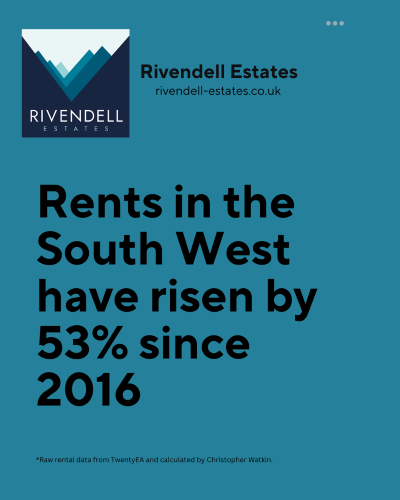Private Rents in the South West Have Risen by 53% Since 2016 – But What Does That Really Mean?

Since 2016, private rents in the South West have increased by 53%, according to data from TwentyEA and Denton House Research. This figure may come as a surprise to some and no doubt will stir mixed feelings—especially among tenants who’ve seen their monthly outgoings steadily climb.
Yet there’s another side to the story.
Landlords have faced rising costs of their own—maintenance, compliance, mortgage interest, and more. Rent isn’t just a charge; it’s the return on an investment, and that investment helps maintain the quality and availability of homes in our local rental market.
What’s interesting is that this rental growth in the South West sits within a wider national trend. Across the UK, average rents have risen by 33.1% since 2016. At the same time, average wages have gone from £28,195 to £37,430—a rise of 32.75%. When looked at side by side, rent growth has closely mirrored wage growth, showing the market is, in many ways, driven by tenant affordability.
Some regions—like Inner London (23.8%) and Outer London (20.5%)—have seen below-inflation rent growth. Others, like the South West (53.0%) and Scotland (47.4%), have seen more significant increases, likely reflecting a longer-term catch-up.
Here’s how other regions compare:
• South West: 53.0%
• Scotland: 47.4%
• East Midlands: 44.8%
• North West: 45.3%
• N. Ireland: 45.2%
• Wales: 41.1%
• West Mids: 34.5%
• Yorks & Humber: 34.6%
• East Anglia: 30.7%
• South East: 24.6%
• Inner London: 23.8%
• North East: 23.0%
• Outer London: 20.5%
This isn’t about finger pointing or blame—it’s about understanding the forces at play in our local property market and having a sensible, informed conversation about what comes next.









